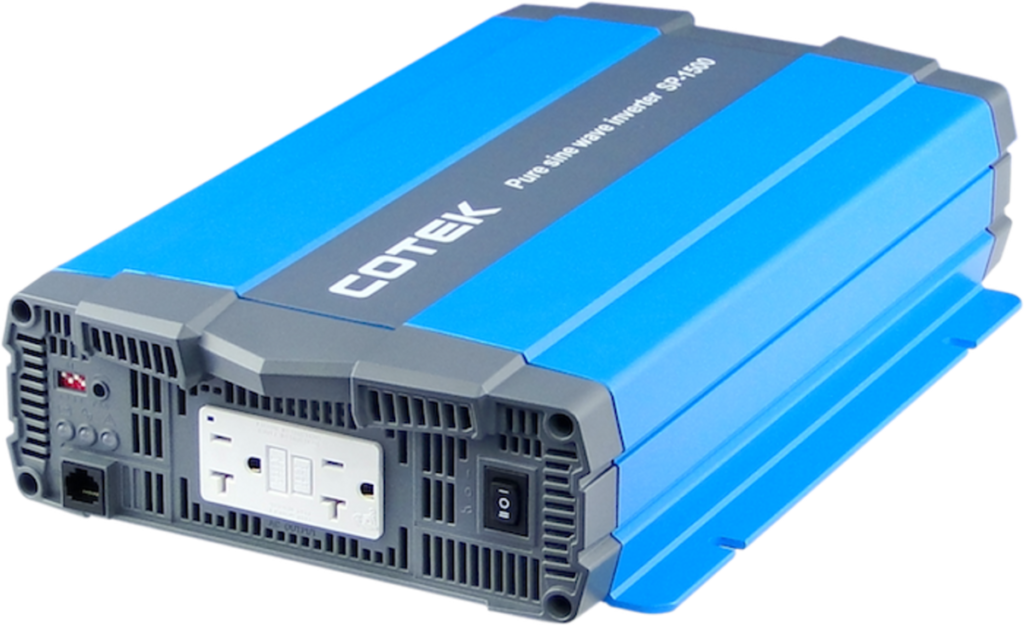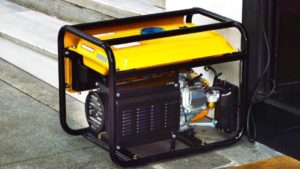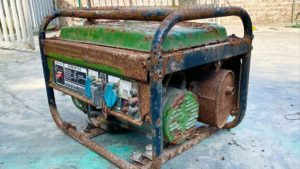To ensure a smooth and reliable off-grid living experience, proper maintenance of your inverter system is important.
We will provide you with practical tips and actionable information on how to keep your inverter running efficiently, preventing potential issues before they arise.
From cleaning the system components to monitoring battery health, these easy-to-follow tips will help ensure your off-grid lifestyle remains uninterrupted.
Check the battery voltage regularly
Monitoring the voltage of your deep cycle batteries is important to ensure they are being charged properly and to prolong their lifespan. Use a multimeter to check the voltage of each battery individually and as a combined total.
To do this, you’ll need a multimeter, which can measure the voltage of each battery individually and as a combined total.
When you first connect your solar panel and charge controller, the voltage of your batteries should be around 12.6 volts for a 12-volt battery.
As the battery charges, the voltage will increase to around 14.4 volts, and then decrease as the battery discharges.
It’s important to note that the voltage of the batteries should never drop below 12.4 volts, as this can cause damage to the batteries and potentially lead to a fire.
If the voltage of the batteries remains consistently high (above 14.4 volts), this can also cause damage and shorten the lifespan of the batteries.
By regularly monitoring the voltage of your batteries, you can ensure that they are being charged properly and that any issues are caught and addressed before they become major problems.
Clean the batteries and connectors
Dirt, corrosion, or grime can build up on the terminals and connectors of your batteries, causing a loss of efficiency and potentially damaging the components. Use a wire brush or cloth to clean the terminals and connectors regularly.
Cleaning the batteries and connectors is a important step in maintaining the optimal performance of your energy storage system.
Over time, dirt, corrosion, and grime can accumulate on the terminals and connectors, causing a loss of efficiency and potentially damaging the components.
When not properly maintained, these residues can lead to oxidation and corrosion, which can reduce the battery’s capacity and lifespan.
In addition, dirty connectors can cause poor connections, leading to power loss and even damage to the components.
To avoid these issues, it’s essential to clean the terminals and connectors regularly using a wire brush or cloth.
This simple step can help ensure the longevity and optimal performance of your energy storage system, ultimately saving you time, money, and hassle in the long run.
Monitor the charge controller
Your charge controller is responsible for regulating the flow of power from your solar panels to your batteries. Check the controller regularly to ensure it’s functioning properly and that all lights and displays are working as they should.
Monitoring the charge controller is a important aspect of ensuring your solar power system is functioning properly and efficiently.
The charge controller regulates the flow of power from your solar panels to your batteries, and it is important to check the controller regularly to ensure it is functioning properly.
All lights and displays on the controller should be working as they should, and any issues or malfunctions should be addressed promptly.
By regularly monitoring the charge controller, you can ensure that your batteries are being charged correctly, and that your system is operating at its full potential.
You can catch any potential issues before they become major problems, preventing unnecessary damage to your system and its components.
So, make it a habit to regularly check your charge controller, and keep your solar power system running smoothly and efficiently.
Inspect the solar panels
Check your solar panels regularly for any damage or debris that may be obstructing their ability to generate power. Make sure all connections are secure and that there are no broken or cracked panels.
Regular inspections of your solar panels are important to ensure optimal energy production and longevity of the system.
Check your panels every few months for any signs of damage, such as cracks, breaks, or missing cells.
Also, look for any debris that may be obstructing the panels’ ability to generate power, such as leaves, dirt, or bird droppings.
Make sure all connections are secure and that there are no loose or corroded wires.
Inspecting your solar panels regularly can help prevent issues and detect potential problems early on, ensuring your system runs efficiently and provides maximum energy savings.
In addition, checking your solar panels regularly can help extend their lifespan and reduce the need for costly repairs or replacements.
By investing a few minutes each month to inspect your solar panels, you can ensure your system operates at peak performance and provides the best possible returns on your investment.
Verify the inverter settings
Double-check the settings on your inverter to ensure they are correct and optimized for your system. Make sure the voltage and current settings are set correctly and that the inverter is set to charge your batteries when the sun is shining.
To ensure your solar power system is operating at its full potential and charging your batteries efficiently, it’s essential to verify the inverter settings.
Double-check the voltage and current settings to ensure they are set correctly and aligned with your system’s specifications.
Incorrect settings can result in undercharging or overcharging of your batteries, which can lead to premature aging or even battery failure.
Furthermore, make sure the inverter is set to charge your batteries when the sun is shining.
This is important for optimal energy harvesting and storage.
By taking the time to verify the inverter settings, you can prevent any potential issues and ensure your system is operating at its peak performance.
You may also want to consider adjusting the inverter’s charging schedule to match your specific energy needs and usage patterns.
By doing so, you can maximize your energy independence and reduce your reliance on the grid.
Test the inverter every month
Use a multimeter to test the inverter’s output voltage and current to ensure it’s functioning properly. This test should be done with the system under load and with the sun not shining.
To ensure optimal performance and longevity of your solar power system, it is essential to test the inverter every month.
A multimeter is a important tool for this test, as it allows you to measure the output voltage and current of the inverter.
When performing the test, make sure the system is under load, and the sun is not shining.
This simulates real-world conditions and provides an accurate assessment of the inverter’s functioning.
First, set the multimeter to the DC voltage setting and measure the output voltage of the inverter.
The voltage should be within the rated specifications of the manufacturer, which can be found in the product manual or on the manufacturer’s website.
Next, set the multimeter to the DC current setting and measure the output current of the inverter.
Again, the current should be within the rated specifications.
It is important to perform this test with the system under load, as this simulates the real-world conditions in which the inverter will be operating.
If the inverter is not functioning properly under load, it may not be able to supply the necessary power to your appliances or devices.
Testing the inverter with the sun not shining simulates a cloudy or rainy day, which can affect the output of the inverter.
By testing the inverter every month, you can ensure that it is functioning properly and catch any potential issues before they become major problems.
This will help you maintain a reliable and efficient solar power system, which will save you money on your energy bills and provide a sustainable source of energy for your home or business.
Change the oil in your charge controller
Some charge controllers require regular oil changes to ensure proper operation. Check your owner’s manual to determine if this applies to your system and follow the manufacturer’s recommendations.
To ensure optimal performance and longevity of your solar charging system, it is important to change the oil in your charge controller regularly.
Some charge controllers require regular oil changes to prevent wear and tear on the internal components and maintain proper operation.
Before proceeding, consult your owner’s manual to determine if your specific charge controller requires oil changes and follow the manufacturer’s recommendations.
To change the oil, first disconnect the charging cables from the controller and locate the oil reservoir.
This is usually marked with an oil can symbol or indicated in the owner’s manual.
Use a clean, dry cloth to wipe down the reservoir cap and remove any dust or debris.
Next, use a soft-bristled brush to gently clean the opening of the reservoir.
Once clean, add the recommended type and amount of oil, following the manufacturer’s guidelines.
Replace the reservoir cap and reconnect the charging cables.
By regularly changing the oil in your charge controller, you can prevent damage caused by dirt, dust, and heat buildup, ensuring a longer lifespan for your system and maximum energy production.
Store your inverter and charge controller in a dry, cool place
Extreme temperatures or humidity can damage your inverter and charge controller, so it’s important to keep them in a controlled environment. This will help extend the life of your system and ensure it continues to operate at peak efficiency.
Store your inverter and charge controller in a dry, cool place to ensure their longevity and optimal performance.
Extreme temperatures and humidity can cause damage to these critical components, potentially leading to system failures and reduced efficiency.
High temperatures can cause the inverter to overheat, leading to a decrease in its lifespan and an increase in energy losses.
Similarly, humidity can cause condensation to form within the charge controller, leading to short circuits and potential system failure.
By storing your inverter and charge controller in a dry, cool place, you can help prevent these issues and extend the life of your solar power system.
This not only ensures the continued efficiency of your system but also helps to prevent costly repairs and replacements.
Want More? Dive Deeper Here!
Hey there! If you’re the type who loves going down the rabbit hole of information (like we do), you’re in the right spot. We’ve pulled together some cool reads and resources that dive a bit deeper into the stuff we chat about on our site. Whether you’re just killing time or super into the topic, these picks might just be what you’re looking for. Happy reading!






